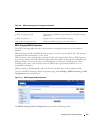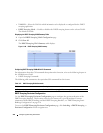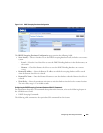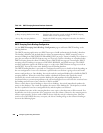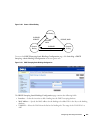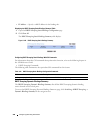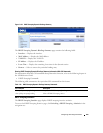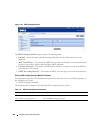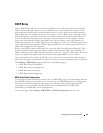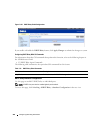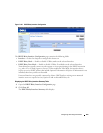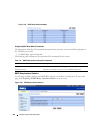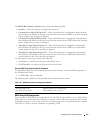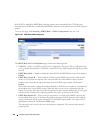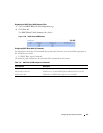
Configuring Switching Information 461
DHCP Relay
When a DHCP client and server are in the same IP subnet, they can directly connect to exchange IP
address requests and replies. However, having a DHCP server on each subnet can be expensive and is
often impractical. Alternatively, network infrastructure devices can be used to relay packets between a
DHCP client and server on different subnets. Such a device, a Layer 3 Relay agent, is generally a router
that has IP interfaces on both the client and server subnets and can route between them. However, in
Layer 2 switched networks, there may be one or more infrastructure devices (for example, a switch)
between the client and the L3 Relay agent/DHCP server. In this instance, some of the client device
information required by the L3 Relay agent may not be visible to it. In this case, an L2 Relay agent can be
used to add the information that the L3 Relay Agent and DHCP server need to perform their roles in
address and configuration and assignment.
Before it relays DHCP requests from clients, the switch can add a Circuit ID and a Remote ID. These
provide information about the circuit and port number connected to the client. This information is
added as suboptions in the DHCP Option 82 packets (see sections 3.1 and 3.2 of RFC3046). The switch
removes this option from packets that it relays from L3 Relay agents/DHCP servers to clients.
These sub-options may be used by the DHCP server to affect how it treats the client, and also may be
used by the relay agent to limit broadcast replies to the specific circuit or attachment point of the client.
The Switching
→
DHCP Relay page provides links to the following pages:
• DHCP Relay Global Configuration
• DHCP Relay Interface Configuration
•DHCP Relay Interface Statistics
• DHCP Relay VLAN Configuration
DHCP Relay Global Configuration
Use this page to enable or disable the switch to act as a DHCP Relay agent. This functionality must also
be enabled on each port you want this service to operate on (see DHCP Relay Interface Configuration).
The switch can also be configured to relay requests only when the VLAN of the requesting client
corresponds to a service provider’s VLAN ID that has been enabled with the L2 DHCP relay
functionality (see DHCP Relay VLAN Configuration).
To access this page, click Switching
→
DHCP Relay
→
Global Configuration in the tree view.



